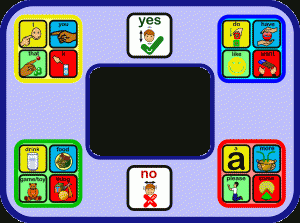SYMBOLIC ABILITIES AND SOCIAL ASPECTS OF COMMUNICATION

SYMBOLIC ABILITIES AND SOCIAL ASPECTS OF COMMUNICATION
Symbolic abilities and social communication are fundamental to early childhood development, playing a pivotal role even before the consistent use of language emerges. Symbols, including words and gestures, act as critical tools for social interaction, enabling young children to engage meaningfully with their environment. By the age of three, most children adeptly use words to represent complex social concepts, facilitating engagement and understanding. For example, Ji-Yun, a 13-month-old, used a gesture to symbolize a bird, initiating a meaningful interaction with her caregiver, while 23-month-old Daniel combined words and gestures to convey social concepts, highlighting early connections between symbolic communication and social understanding. Vygotsky posited that these early symbol skills support children’s grasp of the social-emotional world, serving both communicative and representational functions. The research underscores that between ages one and three, rapid development in gestures, vocabulary, and social awareness occurs, though variations in these areas are often linked to differences in social skill acquisition. Unfortunately, preverbal connections between symbolic communication and social development remain less understood due to a predominant research focus on children aged three and above.
Symbolic play, emerging as children use objects to represent others, reflects cognitive growth and creativity. This form of play fosters development across domains, including physical growth through active play, social-emotional skills via role-playing, cognitive abilities such as problem-solving and imagination, and foundational literacy and numeracy through symbolic understanding. Additionally, symbolic play builds self-esteem and prepares children for formal learning by teaching object representation, a precursor to understanding letters and numbers. In contrast, children with autism spectrum disorder (ASD) often exhibit significant differences in play skills, favoring solitary play and demonstrating deficits in functional and symbolic play due to cognitive impairments, restricted interests, or performance limitations. While functional play, involving conventional object use, is relatively more developed, symbolic play requiring mental representation and imagination is often limited. Children with ASD may repeat simple play acts with minimal flexibility, engage less with social partners, and rarely participate in shared object play without structured environmental support. Research indicates that constructive play is often more accessible to children with ASD than symbolic play, as they demonstrate object substitution more readily than other symbolic acts.
Social communication deficits in ASD present challenges that affect gestures, joint attention, and social cue comprehension, which are essential at various developmental stages. Early indicators such as difficulties with pointing, imitation, and name response by 12 months, as well as deficits in joint attention and social gestures by 24 months, can signal developmental delays. These challenges persist into school years, impacting relationship-building, academic performance, and cooperative play. Children with ASD often rely on unconventional behaviors to communicate and struggle with forming reciprocal friendships. Targeted interventions to enhance social and communication skills are critical, as these areas represent significant developmental weaknesses. Addressing these deficits through early and individualized support can improve social engagement, communication, and overall quality of life for children with ASD.

